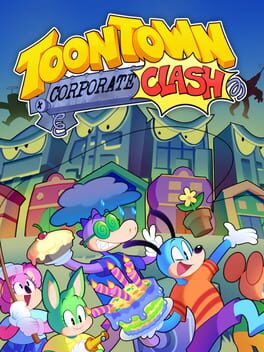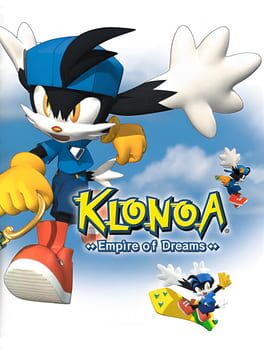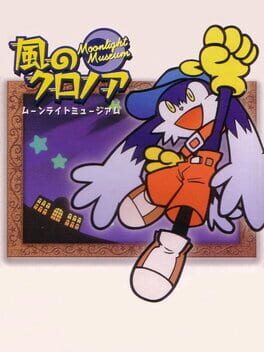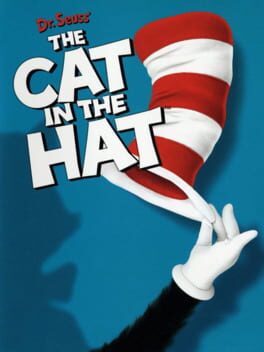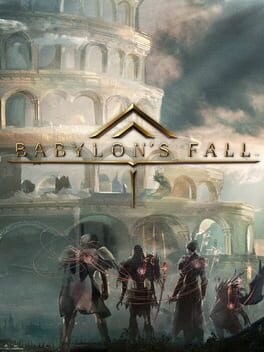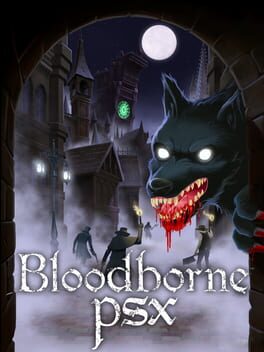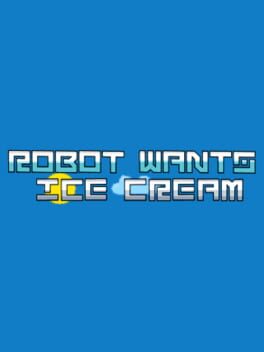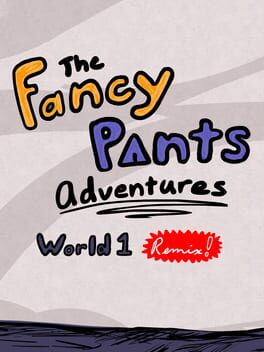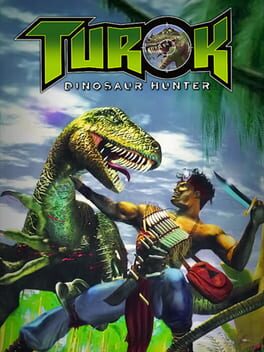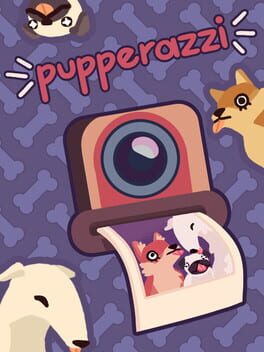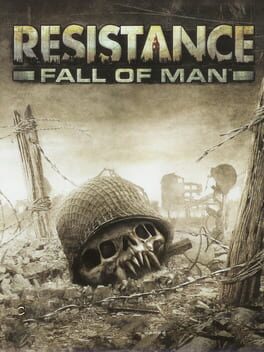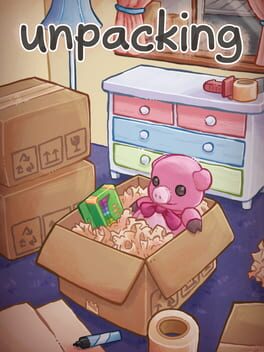Kremdanieko
As someone that's never dabbled in any MMO for more than an hour at most, Corporate Clash's vice grip on me for the past month has been an interesting experience for me.
Deciding to give it a chance since some of my friends play it, I wasn't expecting a game with such a simple set of rules and mechanics to hook me as much as it has. Perhaps it's the simplistic desire for a game to pass the time with, but the combat mechanics are simplistic enough to understand easily and nuanced enough to require coordination to get through tougher encounters unscathed. Combat never feels too tedious to get through, and all the animations associated with the various gags are great. The bosses that have been recently added with the update I started on are great tests of your game knowledge too. They feel appropriate and are genuine tests of cooperation and synergy between players.
As far as downsides go, the game feels somewhat scattered. Obviously polished in several areas, and clearly unpolished in others. Not every street has a pond to fish in, some of the new streets are great to navigate in, but it highlights how tedious a lot of the old streets are. A couple of the new streets added are also undeniably bad and feel like a first attempt in a level editor rather than something that should've been added to the game. Some tasklines are pure tedious filler. While combat doesn't feel too repetitive, being given tasks that force you to go back and forth a long winding road to get to a shopkeeper absolutely IS repetitive. The game also does a poor job of preparing you to do facilities. They're not particularly difficult, but the game doesn't guide you towards doing them before the final taskline of a playground, in which you have to do all 10 in a row if you neglected to grind these out earlier while doing other tasks.
The lack of an NPC telling you it's a good idea to go and do these feels like a misstep when the playgrounds before daffodil gardens didn't have any such area to help grind tasklines in. It's not a natural conclusion to come to.
This is more of a ramble than a review at this point, but to cut a long story short: I think Toontown: Corporate Clash is worth your time. It's completely free, has no microtransactions, has no subscription, nothing to goad you into spending real money on it. And that, alongside its aesthetic, is a big pull in its favour. If that was the only things it had going for it, I would just point you towards the hundreds of free flash games out there in the world. But it's not. It has large amounts of content and work put into it, and its retooling of mechanics and functions make it an enjoyable and engaging MMO to tinker away at.
Deciding to give it a chance since some of my friends play it, I wasn't expecting a game with such a simple set of rules and mechanics to hook me as much as it has. Perhaps it's the simplistic desire for a game to pass the time with, but the combat mechanics are simplistic enough to understand easily and nuanced enough to require coordination to get through tougher encounters unscathed. Combat never feels too tedious to get through, and all the animations associated with the various gags are great. The bosses that have been recently added with the update I started on are great tests of your game knowledge too. They feel appropriate and are genuine tests of cooperation and synergy between players.
As far as downsides go, the game feels somewhat scattered. Obviously polished in several areas, and clearly unpolished in others. Not every street has a pond to fish in, some of the new streets are great to navigate in, but it highlights how tedious a lot of the old streets are. A couple of the new streets added are also undeniably bad and feel like a first attempt in a level editor rather than something that should've been added to the game. Some tasklines are pure tedious filler. While combat doesn't feel too repetitive, being given tasks that force you to go back and forth a long winding road to get to a shopkeeper absolutely IS repetitive. The game also does a poor job of preparing you to do facilities. They're not particularly difficult, but the game doesn't guide you towards doing them before the final taskline of a playground, in which you have to do all 10 in a row if you neglected to grind these out earlier while doing other tasks.
The lack of an NPC telling you it's a good idea to go and do these feels like a misstep when the playgrounds before daffodil gardens didn't have any such area to help grind tasklines in. It's not a natural conclusion to come to.
This is more of a ramble than a review at this point, but to cut a long story short: I think Toontown: Corporate Clash is worth your time. It's completely free, has no microtransactions, has no subscription, nothing to goad you into spending real money on it. And that, alongside its aesthetic, is a big pull in its favour. If that was the only things it had going for it, I would just point you towards the hundreds of free flash games out there in the world. But it's not. It has large amounts of content and work put into it, and its retooling of mechanics and functions make it an enjoyable and engaging MMO to tinker away at.
1998
The modern interpretation of Sonic Adventure seems to have flipped over the past few years. It's the reason I've decided to give the game a shot in the first place. From everyone tearing it apart just some years ago to extreme love for the game. With praise given to the original release on Dreamcast over the DX version available on modern hardware, claiming it lacks the issues that DX had. And while that may be true, Sonic Adventure is still a buggy mess of a game split between 6 gameplay styles each with their own inherent flaws on the original Dreamcast release.
The camera in this game is truly horrendous, getting stuck on terrain constantly, as well as swapping between fixed "cinematic" perspectives and player controlled camera angles on a dime. It's hard to judge perspective at times, and the game will repeatedly refuse to give you a good angle for platforming.
This isn't to mention scripted sequences breaking if you dare do anything the game wasn't prepared for, most often resulting in death. Characters glitching into geometry or simply not handling changes in elevation well at all, Sonic especially suffers from this as he goes from 0 to 100 far too quickly and becomes a troublesome mess to control.
There are some minor highlights in the game. Some of the music is alright, but unfortunately none of it ever reaches the heights of previous or future games and the game will never let you listen to a lot of it until it stops the music, then proceeds to play the exact same song from the start over and over again.
The cutscenes are stilted and poorly directed. Mostly uninteresting talking or vague action scenes that just look awful. They don't add much of value and it's a shame you can't skip them.
Sonic Adventure gives you the unique opportunity to fear using your controller, as well as not using your controller, as there's simply no way to tell what the game will do until you figure it out through trial and error. Sonic especially will careen wildly side to side with the slightest touch of the analogue stick. And in spite of being on a system with 4 face buttons, the developers opted to place several functions on a single "action button". At times Sonic will decide not to do the homing attack as he'd rather dash to his death, and the input for the light speed dash is too slow and could've simply been moved to its own separate button with no issue.
The age old saying "Sonic had a rough transition into 3D" is sugar-coating it, to put it lightly. Sonic truly had a disastrous transition into 3D, and no amount of "vibes" will fix this.
The camera in this game is truly horrendous, getting stuck on terrain constantly, as well as swapping between fixed "cinematic" perspectives and player controlled camera angles on a dime. It's hard to judge perspective at times, and the game will repeatedly refuse to give you a good angle for platforming.
This isn't to mention scripted sequences breaking if you dare do anything the game wasn't prepared for, most often resulting in death. Characters glitching into geometry or simply not handling changes in elevation well at all, Sonic especially suffers from this as he goes from 0 to 100 far too quickly and becomes a troublesome mess to control.
There are some minor highlights in the game. Some of the music is alright, but unfortunately none of it ever reaches the heights of previous or future games and the game will never let you listen to a lot of it until it stops the music, then proceeds to play the exact same song from the start over and over again.
The cutscenes are stilted and poorly directed. Mostly uninteresting talking or vague action scenes that just look awful. They don't add much of value and it's a shame you can't skip them.
Sonic Adventure gives you the unique opportunity to fear using your controller, as well as not using your controller, as there's simply no way to tell what the game will do until you figure it out through trial and error. Sonic especially will careen wildly side to side with the slightest touch of the analogue stick. And in spite of being on a system with 4 face buttons, the developers opted to place several functions on a single "action button". At times Sonic will decide not to do the homing attack as he'd rather dash to his death, and the input for the light speed dash is too slow and could've simply been moved to its own separate button with no issue.
The age old saying "Sonic had a rough transition into 3D" is sugar-coating it, to put it lightly. Sonic truly had a disastrous transition into 3D, and no amount of "vibes" will fix this.
As a followup to Moonlight Museum, Empire of Dreams tightens up the controls a bit, the visuals are obviously much more vivid and appealing, and it introduces some new mechanics to toy with.
Unfortunately it never reaches the highs of the previous game and its puzzle design feels neutered in comparison. Boss fights, jetboard stages, and autoscrolling stages focused on timed platforming over any amount of core puzzle solving dilutes the experience of the game as a whole.
Moonlight Museum felt confident in its lack of gimmick stages or boss fights. Focusing purely on making the puzzle solving engaging for an entire playthrough, with cute little pictures as rewards for players that went out of their way to get the most out of the game. In contrast, Empire of Dreams lacks any real completionists bonus aside from half the amount of EX stages as its predecessor had.
A decent game overall, but disappointing coming right off Moonlight Museum.
Unfortunately it never reaches the highs of the previous game and its puzzle design feels neutered in comparison. Boss fights, jetboard stages, and autoscrolling stages focused on timed platforming over any amount of core puzzle solving dilutes the experience of the game as a whole.
Moonlight Museum felt confident in its lack of gimmick stages or boss fights. Focusing purely on making the puzzle solving engaging for an entire playthrough, with cute little pictures as rewards for players that went out of their way to get the most out of the game. In contrast, Empire of Dreams lacks any real completionists bonus aside from half the amount of EX stages as its predecessor had.
A decent game overall, but disappointing coming right off Moonlight Museum.
A solid puzzle platformer using the mechanics of Klonoa on the PS1 in a 2D space and going wild with the puzzle designs you could create out of them.
The music ranges from pretty good to downright painful, and you better hope you enjoy listening to crunchy WAHOOS a lot because this game has them in spades. On the flipside, the visuals of the game are very charming, and the pictures you'd unlock by collecting all the dream stones had me hunting them down in each stage.
The game has 5 regular worlds with 6 stages each and then a final EX world that's absolutely brutal. Transitioning from the bare bones mechanics you'd get out of Klonoa's abilities and slowly expanding into an entertaining challenge.
Moonlight Museum took its time to become something I truly enjoyed and appreciated, but once it did it was an absolute delight.
The music ranges from pretty good to downright painful, and you better hope you enjoy listening to crunchy WAHOOS a lot because this game has them in spades. On the flipside, the visuals of the game are very charming, and the pictures you'd unlock by collecting all the dream stones had me hunting them down in each stage.
The game has 5 regular worlds with 6 stages each and then a final EX world that's absolutely brutal. Transitioning from the bare bones mechanics you'd get out of Klonoa's abilities and slowly expanding into an entertaining challenge.
Moonlight Museum took its time to become something I truly enjoyed and appreciated, but once it did it was an absolute delight.
When you think about licensed games released in the early 2000s for the 6th generation of consoles, you probably don't think of the Cat in the Hat.
However after playing through the game for the first time since I was a very small child I can confidently say that this game maybe shouldn't be slept on quite as much as it is.
There's this genuine sense that the developers cared about the project they were working on. Despite being relatively short with only 10 regular stages, a bonus stage, and 3 almost identical boss fights, each regular level is filled to the brim with visually interesting backgrounds, each stage having its own set of dozens of unique assets slotting in perfectly with its theme.
Character & enemy models are fairly low poly, and there is some level of mismatched aesthetics in regards to general visual consistency, however these did little to impact my enjoyment of the creativity on display.
Mechanically, the game is a 2.5D platformer without a large suite of mechanics. The cat can jump, hover, shoot bubbles to capture enemies or goo and then shoot them at things, stomp the ground with his umbrella, and cower in fear under it. The goo acts as an explosive projectile that can break certain metallic objects as well as regular wooden breakables.
There are some minor hiccups within these mechanics. Turning 180 degrees at a standstill forces you to wait for the turnaround animation before the cat moves, which can be awkward, especially considering this doesn't happen if you turn while in motion. Teleport pads always without fail cause the cat to launch off them slightly, forcing you to stop holding the directional pad in mid air so you don't miss the pad and potentially fall to your doom.
Attempting to aim at objects in the background with a projectile can be finnicky depending on the camera angle you're given, which can cause some frustration if you need to backtrack.
Given its status as a tie-in licensed movie game, it's generally surprising the developers had the foresight to allow you to backtrack throughout any entire level to collect stray collectables you might have missed. This is something I've rarely encountered even in renowned sidescrolling games and I have to give the developers credit for taking this into consideration. On my journey to get 100% in the game I would backtrack in several levels because I missed something, so it's much appreciated.
Unfortunately the audio is a mixed bag. The game features a sleuth of generic stock sounds youv'e heard a million times before, and the soundtrack is a lot of fairly generic "licensed game" music, with some standout moments in each track that made the songs bareable. However the voice acting is surpisingly solid. The majority of voice acting talent is given to the cat (Chris Edgerly) and the goldfish (Nolan North). While this may not be their best performances, it's solid, and you can tell they gave it their all to add emotion to these quite frankly weird looking models.
The Cat in the Hat isn't some magnificent hidden gem waiting to be uncovered by the masses, but it's not deserving of middling to low scores. It's a generally entertaining 2.5D platformer with some well thought out elements to make the ride smooth. Interesting & varied visuals, okay sound design, pretty good level design, and decent mechanics are what makes the game worth a look at the bare minimum.
However after playing through the game for the first time since I was a very small child I can confidently say that this game maybe shouldn't be slept on quite as much as it is.
There's this genuine sense that the developers cared about the project they were working on. Despite being relatively short with only 10 regular stages, a bonus stage, and 3 almost identical boss fights, each regular level is filled to the brim with visually interesting backgrounds, each stage having its own set of dozens of unique assets slotting in perfectly with its theme.
Character & enemy models are fairly low poly, and there is some level of mismatched aesthetics in regards to general visual consistency, however these did little to impact my enjoyment of the creativity on display.
Mechanically, the game is a 2.5D platformer without a large suite of mechanics. The cat can jump, hover, shoot bubbles to capture enemies or goo and then shoot them at things, stomp the ground with his umbrella, and cower in fear under it. The goo acts as an explosive projectile that can break certain metallic objects as well as regular wooden breakables.
There are some minor hiccups within these mechanics. Turning 180 degrees at a standstill forces you to wait for the turnaround animation before the cat moves, which can be awkward, especially considering this doesn't happen if you turn while in motion. Teleport pads always without fail cause the cat to launch off them slightly, forcing you to stop holding the directional pad in mid air so you don't miss the pad and potentially fall to your doom.
Attempting to aim at objects in the background with a projectile can be finnicky depending on the camera angle you're given, which can cause some frustration if you need to backtrack.
Given its status as a tie-in licensed movie game, it's generally surprising the developers had the foresight to allow you to backtrack throughout any entire level to collect stray collectables you might have missed. This is something I've rarely encountered even in renowned sidescrolling games and I have to give the developers credit for taking this into consideration. On my journey to get 100% in the game I would backtrack in several levels because I missed something, so it's much appreciated.
Unfortunately the audio is a mixed bag. The game features a sleuth of generic stock sounds youv'e heard a million times before, and the soundtrack is a lot of fairly generic "licensed game" music, with some standout moments in each track that made the songs bareable. However the voice acting is surpisingly solid. The majority of voice acting talent is given to the cat (Chris Edgerly) and the goldfish (Nolan North). While this may not be their best performances, it's solid, and you can tell they gave it their all to add emotion to these quite frankly weird looking models.
The Cat in the Hat isn't some magnificent hidden gem waiting to be uncovered by the masses, but it's not deserving of middling to low scores. It's a generally entertaining 2.5D platformer with some well thought out elements to make the ride smooth. Interesting & varied visuals, okay sound design, pretty good level design, and decent mechanics are what makes the game worth a look at the bare minimum.
1986
As a fan of the Zelda games, it's taken me an almost shocking amount of time to properly indulge in the original title of the series. The game that every successive game still takes ideas and concepts from to form the baseline core of this longstanding series.
The Legend of Zelda is an interesting relic from its time. Relatively quaint and rather short for its massive franchise, the game generally manages to not overstay its welcome, however certain elements of the game are purposefully obtuse, some to the point of being a bit unfair without some sort of guide. This is mostly only an issue with minor caves, but unfortunately also an issue with discovering the entrance to one of the major required levels of the game.
I'd hesitate to say it succeeds in making the journey feel like a proper adventure with its shockingly small map, but discovering secrets and powering Link up throughout is generally satisfying overall, and being able to discover late game dungeons before even finding earlier ones, and challenging yourself with them gives a sense of freedom that other Zelda games still fail to replicate for the most part.
Unfortunately, the game gets rather frustrating in later levels and even in the overworld with certain enemies seemingly designed to do nothing but frustrate and get in the way, several with awkward random movements that make it hard to land hits without getting hurt yourself.
A decent curiosity to be sure, one worth visiting if you're already a fan of Zelda and want to peek into where it all began, however it's only something I could possibly reccommend to people with patience and a tolerance for older, stiffer games.
The Legend of Zelda is an interesting relic from its time. Relatively quaint and rather short for its massive franchise, the game generally manages to not overstay its welcome, however certain elements of the game are purposefully obtuse, some to the point of being a bit unfair without some sort of guide. This is mostly only an issue with minor caves, but unfortunately also an issue with discovering the entrance to one of the major required levels of the game.
I'd hesitate to say it succeeds in making the journey feel like a proper adventure with its shockingly small map, but discovering secrets and powering Link up throughout is generally satisfying overall, and being able to discover late game dungeons before even finding earlier ones, and challenging yourself with them gives a sense of freedom that other Zelda games still fail to replicate for the most part.
Unfortunately, the game gets rather frustrating in later levels and even in the overworld with certain enemies seemingly designed to do nothing but frustrate and get in the way, several with awkward random movements that make it hard to land hits without getting hurt yourself.
A decent curiosity to be sure, one worth visiting if you're already a fan of Zelda and want to peek into where it all began, however it's only something I could possibly reccommend to people with patience and a tolerance for older, stiffer games.
2022
2022
Potentially one of the most solid flash games that the web has to offer, arriving fashionably late into Flash's lifespan, and well past the relevancy of the little stickmans franchise, fancy pants adventures world 1 remix is a shockingly good momentum based 2D platformer. World 1 remix is short, sweet, and to the point, yet brimming with collectable outfits, several varied levels to trek through, and secrets to find hidden throughout, fancy pants represents some of the best qualities flash games were capable of, and is a good argument for the continued preservation of the platform. The world of games would simply be a worse place with no way to play these games.
2022
Taking pictures is one of the more finnicky mechanics in many games. Having the game fail to register something can be frustrating, but for the most part it's never too big a deal.
In pupperazzi, the entire game is based around the premise of taking pictures of dogs, meaning the mechanics of the picture taking must work the majority of the time. Of course, this isn't the case at all. The games detection system seems wonky at best as taking pictures of a dog directly in the centre of the camera head on will sometimes result in the fake comments asking what dog is supposed to be the focus. The quests are similarly arbitrary with several of them not registering the dog properly despite the conditions being met.
There are essentially no extra features to grab your interest outside of taking pictures of dogs. The appeal only lasts for a very short amount of time before the game gets far too dull to continue playing.
The aesthetics are fine. However there's a strange lag that appears frequently despite the graphics being very unremarkable. Dogs and other elements having the absolute bare minimum animation, mostly consisting of the static models stretching & squashing a bit as they move.
The written text is nauseatingly "soft" "uwu" "pupper" type dialogue that made me roll my eyes to the point it hurt several times. The gimmick gets old immediately and only results in frustration at best.
Possibly the most shocking to me was that the UI design is absolutely horrific. Poorly explained and implemented. I was struggling for a good few minutes on how to even deliver on quests at all. The other menus are lacking too. No button remapping in any capacity, no real graphics settings, and the only other notable option being a setting to turn off moving cars.
Don't buy the game, don't even give it a chance on gamepass. There are far better things you can do with your time than waste it on something as dull as pupperazzi.
In pupperazzi, the entire game is based around the premise of taking pictures of dogs, meaning the mechanics of the picture taking must work the majority of the time. Of course, this isn't the case at all. The games detection system seems wonky at best as taking pictures of a dog directly in the centre of the camera head on will sometimes result in the fake comments asking what dog is supposed to be the focus. The quests are similarly arbitrary with several of them not registering the dog properly despite the conditions being met.
There are essentially no extra features to grab your interest outside of taking pictures of dogs. The appeal only lasts for a very short amount of time before the game gets far too dull to continue playing.
The aesthetics are fine. However there's a strange lag that appears frequently despite the graphics being very unremarkable. Dogs and other elements having the absolute bare minimum animation, mostly consisting of the static models stretching & squashing a bit as they move.
The written text is nauseatingly "soft" "uwu" "pupper" type dialogue that made me roll my eyes to the point it hurt several times. The gimmick gets old immediately and only results in frustration at best.
Possibly the most shocking to me was that the UI design is absolutely horrific. Poorly explained and implemented. I was struggling for a good few minutes on how to even deliver on quests at all. The other menus are lacking too. No button remapping in any capacity, no real graphics settings, and the only other notable option being a setting to turn off moving cars.
Don't buy the game, don't even give it a chance on gamepass. There are far better things you can do with your time than waste it on something as dull as pupperazzi.
Ugly, drab, dull, any other word you can think of similar to that would be how to describe Resistance.
Coming hot off the heels of Ratchet & Clank, Insomniac decided their best course of action would be to make a generic corridor shooter set in world war 2 starring a gruff, bald american soldier that becomes a living legend throughout the games narrative. The twist on the formula is that instead of Nazis, the american hero fights off aliens with an arsenal of mostly alien weaponry. Unfortunately, your arsenal is a collection of slightly different machine guns. The one unique weapon I acquired before giving up out of boredom did less damage than my generic machine gun arsenal.
The colour palette is as dull as dishwater, and the alien tech setting roots in traditional warzones has slight potential, but is about as uninteresting to look at as anything else. If you want a first person shooter about aliens taking over earth, just play Half-Life 2. If you want a shooter with inventive and interesting weapons, play any of the Ratchet & Clank games. Resistance simply isn't worth playing.
Coming hot off the heels of Ratchet & Clank, Insomniac decided their best course of action would be to make a generic corridor shooter set in world war 2 starring a gruff, bald american soldier that becomes a living legend throughout the games narrative. The twist on the formula is that instead of Nazis, the american hero fights off aliens with an arsenal of mostly alien weaponry. Unfortunately, your arsenal is a collection of slightly different machine guns. The one unique weapon I acquired before giving up out of boredom did less damage than my generic machine gun arsenal.
The colour palette is as dull as dishwater, and the alien tech setting roots in traditional warzones has slight potential, but is about as uninteresting to look at as anything else. If you want a first person shooter about aliens taking over earth, just play Half-Life 2. If you want a shooter with inventive and interesting weapons, play any of the Ratchet & Clank games. Resistance simply isn't worth playing.
2022
I will preface this review by saying that I played the game through gamepass, so the pricing didn't affect me.
The Hitman trilogy is one of the best stealth action games I've played. The amount of content is astounding, the level design superb, the mechanics very fluid and intuitive. The Hitman trilogy combined into one package is a wonderfully lengthy and meaty experience as someone that hasn't played these games before. The level of detail present in each mission and the variety of ways you can assassinate a target, both with the more linear "mission stories" and with your own approach is impressive.
Narratively speaking, there isn't too much to say. The trilogy as a whole is about taking down this games equivalent of the illuminati, with a few twists and turns to keep it somewhat interesting.
The always online element only reared its ugly head and got in the way a few times. At one point it connected to the server in the middle of a cutscene and reset it.
If you have gamepass, or if you're not concerned with spending the asking price, the Hitman trilogy is absolutely worth playing. If you're into stealth games, you won't regret it.
The Hitman trilogy is one of the best stealth action games I've played. The amount of content is astounding, the level design superb, the mechanics very fluid and intuitive. The Hitman trilogy combined into one package is a wonderfully lengthy and meaty experience as someone that hasn't played these games before. The level of detail present in each mission and the variety of ways you can assassinate a target, both with the more linear "mission stories" and with your own approach is impressive.
Narratively speaking, there isn't too much to say. The trilogy as a whole is about taking down this games equivalent of the illuminati, with a few twists and turns to keep it somewhat interesting.
The always online element only reared its ugly head and got in the way a few times. At one point it connected to the server in the middle of a cutscene and reset it.
If you have gamepass, or if you're not concerned with spending the asking price, the Hitman trilogy is absolutely worth playing. If you're into stealth games, you won't regret it.
2021
A rather short but sweet "zen" game about unpacking things into rooms. The most exciting aspect of the game is how the developers weave the story going on in the background into the mechanics of certain levels.
However, the limitations on where you're allowed to put items can be rather arbitrary, and it could do with some keyboard binds but those are my only major gripes with the game.
If you have gamepass it's a decent way to pass the time.
However, the limitations on where you're allowed to put items can be rather arbitrary, and it could do with some keyboard binds but those are my only major gripes with the game.
If you have gamepass it's a decent way to pass the time.
